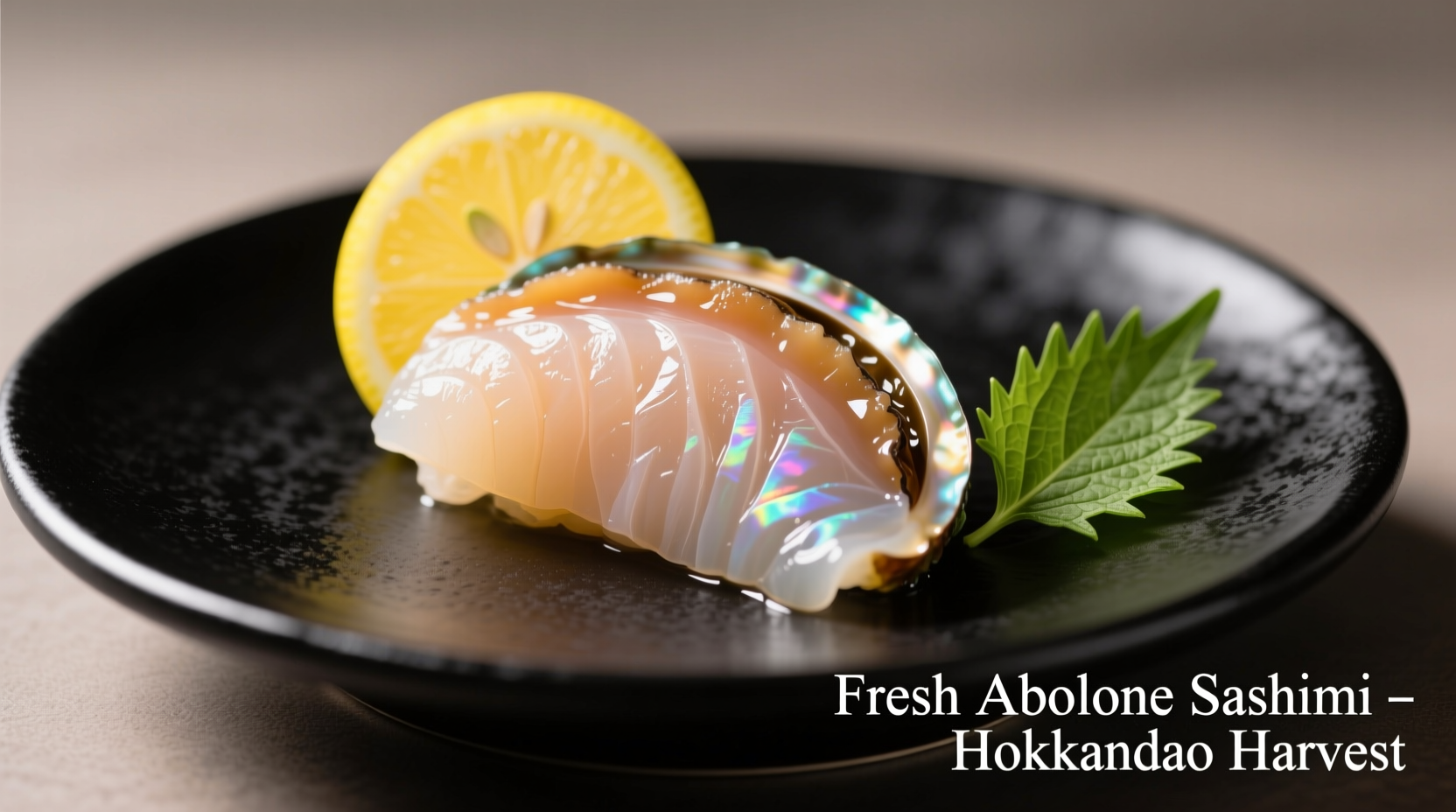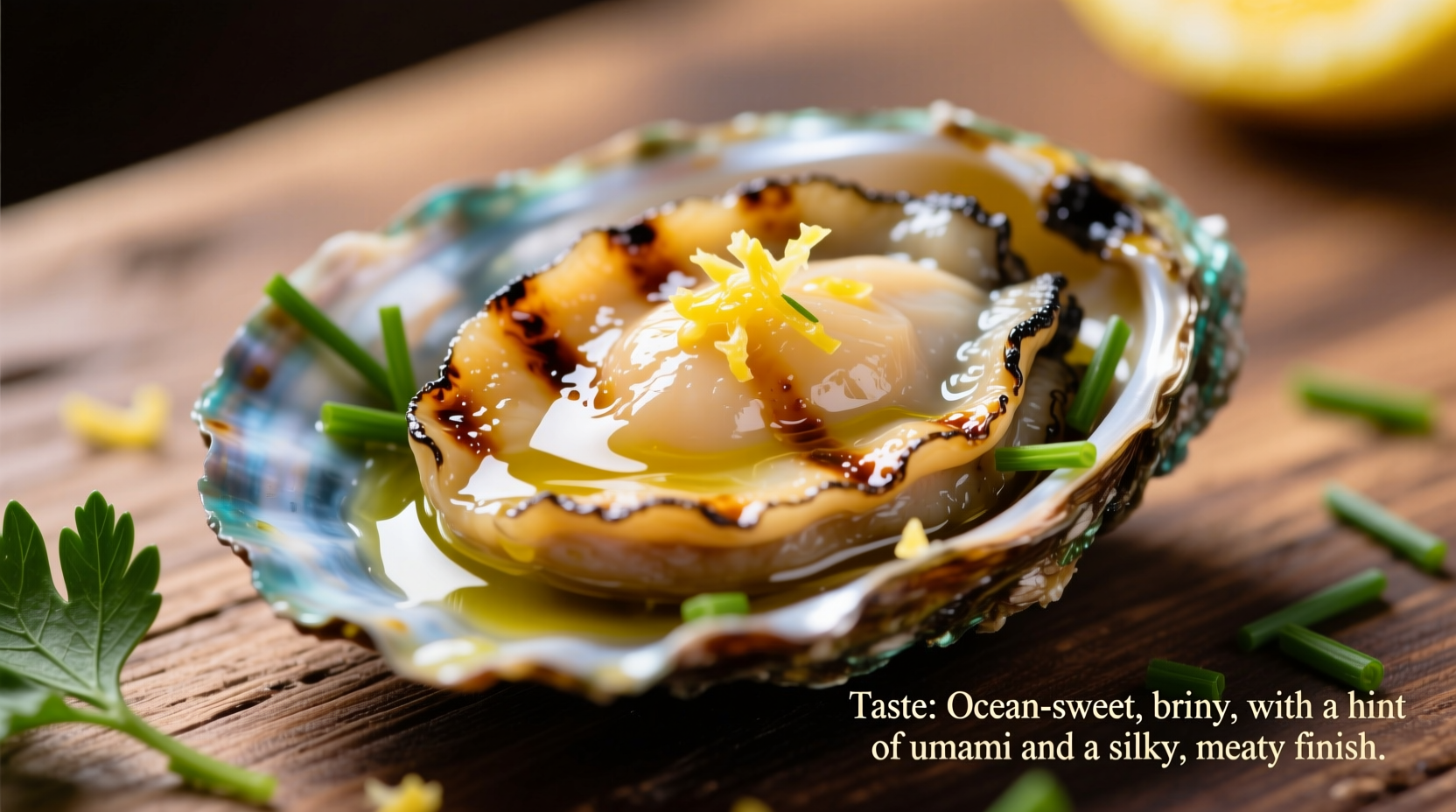If you've ever wondered what makes abalone one of the most prized seafood delicacies worldwide, you're not alone. This marine mollusk's unique flavor profile has captivated chefs and food enthusiasts for centuries, but understanding its precise taste characteristics can be challenging without firsthand experience. Let's explore exactly what to expect when you take that first bite of perfectly prepared abalone.
Decoding Abalone's Distinctive Flavor Profile
Abalone delivers a sophisticated taste experience that sets it apart from other shellfish. At its best, fresh abalone offers a clean, oceanic sweetness with subtle mineral undertones that reflect its rocky coastal habitat. The flavor is distinctly marine but not aggressively fishy—more reminiscent of the clean scent of sea air after a storm than the strong aroma of cooked fish.
The texture plays an equally important role in the overall experience. Properly prepared abalone has a satisfying chew that's firm yet yielding, somewhere between a scallop and a very tender squid. When overcooked, abalone becomes rubbery and loses its delicate flavor, which explains why many first-time diners have disappointing experiences with this premium seafood.
How Abalone Compares to Other Seafood
| Seafood | Flavor Profile | Texture | Similarity to Abalone |
|---|---|---|---|
| Scallop | Sweet, mild | Buttery, tender | 70% - Closest relative but less complex |
| Clam | Briny, metallic | Chewy | 50% - Similar chew but stronger fishiness |
| Lobster | Sweet, rich | Firm, flaky | 40% - Different texture profile |
| Octopus | Subtle oceanic | Chewy when cooked properly | 60% - Similar texture but less sweet |
This comparison shows why abalone occupies a unique position in seafood cuisine. While scallops come closest in flavor profile, abalone offers greater complexity with its distinctive mineral notes that reflect its specific coastal environment. According to the National Oceanic and Atmospheric Administration, these flavor variations directly correlate with the kelp-rich diet of wild abalone in different regions.
How Preparation Methods Transform Abalone's Taste
The way abalone is prepared dramatically affects its final flavor and texture. Traditional methods have evolved based on centuries of culinary experience:
- Raw (sashimi style): When sliced paper-thin and served raw, abalone showcases its purest flavor—clean, slightly sweet with delicate ocean notes. Japanese chefs often score the surface to tenderize while preserving freshness.
- Poached or steamed: Gentle cooking methods preserve tenderness while enhancing natural sweetness. Chinese cuisine often pairs poached abalone with high-quality broth to complement rather than overwhelm its subtle flavor.
- Grilled or pan-seared: Quick high-heat cooking creates a subtle caramelization that adds nutty complexity. Many California coastal restaurants serve abalone this way with minimal seasoning to highlight its natural qualities.
- Canned or preserved: While convenient, preserved abalone loses some freshness but gains umami depth. Properly prepared canned abalone remains a staple in many Asian pantries for special occasions.
Food scientists at the University of California, Santa Barbara have documented how cooking temperature directly impacts abalone's protein structure, explaining why precise timing is crucial. Their research shows that cooking beyond 140°F rapidly toughens the muscle fibers, confirming traditional culinary wisdom about careful preparation.

Regional Variations in Abalone Flavor
Not all abalone tastes the same—geographical origin significantly influences flavor characteristics:
- California red abalone: Considered by many chefs to have the most balanced flavor—sweet with subtle earthy notes from its kelp forest habitat. The California Department of Fish and Wildlife notes these specimens develop richer flavors in colder northern waters.
- Japanese awabi: Smaller but intensely flavorful with pronounced umami qualities. Japanese culinary tradition prizes these for their delicate texture in high-end sushi preparations.
- Australian blacklip abalone: Larger specimens with slightly stronger oceanic flavor that stands up well to bold preparations. Australian fisheries carefully manage these populations to maintain quality.
- South African perlemoen: Distinctive sweet-briny profile that works exceptionally well with citrus-based preparations.
Perfect Pairings for Abalone
Chefs consistently recommend these complementary flavors that enhance rather than compete with abalone's delicate profile:
- Lemon or yuzu for brightness without overpowering
- Light butter sauces with minimal garlic
- High-quality olive oil with fresh herbs
- Subtle Asian seasonings like white miso or delicate soy
- Crisp white wines like Chablis or Albariño
Professional chefs avoid heavy spices or aggressive seasonings that would mask abalone's nuanced flavor. The goal is always to showcase the natural qualities of this premium seafood rather than transform it into something else entirely.
Common Misconceptions About Abalone Taste
Several myths persist about abalone's flavor profile:
- "Abalone tastes strongly fishy" – Actually, properly handled fresh abalone has minimal fishiness, more reminiscent of clean ocean air than cooked fish.
- "All abalone is rubbery" – This results from overcooking; correctly prepared abalone has a satisfying, tender bite.
- "Canned abalone tastes nothing like fresh" – While different, high-quality preserved abalone maintains much of its distinctive flavor profile and is prized in many culinary traditions.
Understanding these distinctions helps set proper expectations when trying abalone for the first time. Culinary surveys show that diners who understand what to expect from abalone report significantly higher satisfaction with their experience compared to those with misconceptions about its flavor characteristics.
What First-Time Abalone Eaters Should Know
If you're preparing to try abalone for the first time, keep these practical tips in mind:
- Seek out fresh rather than frozen when possible for optimal texture
- Choose simple preparations that showcase rather than mask the natural flavor
- Pay attention to texture—it should be tender with slight resistance, not tough
- Consider trying it in a reputable seafood restaurant before attempting preparation at home
- Be prepared for subtle flavors rather than bold taste sensations
Many first-time tasters describe the experience as discovering a new dimension in seafood—familiar yet distinctly different from other shellfish they've tried. The clean, mineral-rich profile creates a memorable culinary experience that explains why abalone has maintained its status as a luxury ingredient across multiple cultures.











 浙公网安备
33010002000092号
浙公网安备
33010002000092号 浙B2-20120091-4
浙B2-20120091-4